Treatment of wet rot – start sooner rather than later
The treatment of wet rot is an incredibly important part of maintaining your home. As with any issue you find inside your home, the earlier the better is the best approach.
Unlike damp though, which can often be treated with some simple principles and fixes, wet rot is a much more serious issue and requires extensive treatments.
This guide is here to give you all the information possible on the treatment of wet rot, including how to identify it and importantly, how to fix it.
What is wet rot?
Wet rot is a type of fungal decay that occurs in wood as a result of excessive moisture.
Essentially, if wooden frames or boards inside your home gets wet and remains wet for long periods of time, wet rot might be on the cards.
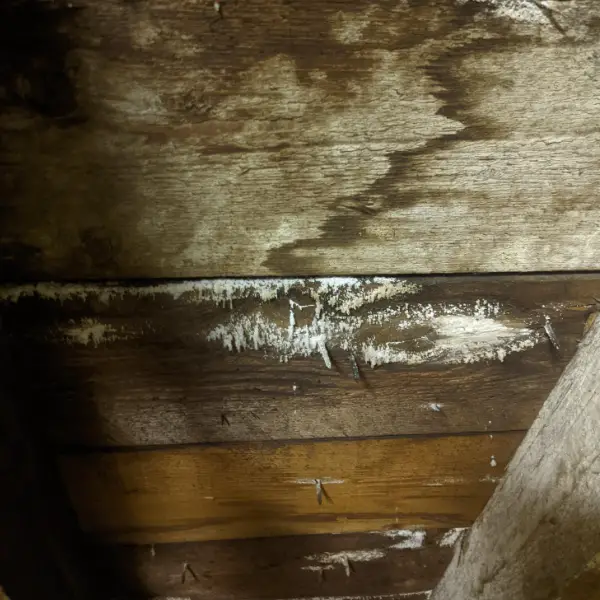
Wet rot fungi feed on the cellulose in wood, causing it to weaken, decay, and eventually fail.
This type of decay is a common problem in older homes and buildings but can affect homes of any age.
Is wet rot a serious issue?
Wet rot is most certainly a serious problem especially if left untreated. It often requires professional intervention and if left to its own devices, it can cause extensive damage to wooden structures.
It is crucial to diagnose a wet rot problem as soon as possible so that fixes and treatments can be put in place before irreversible damage is caused.
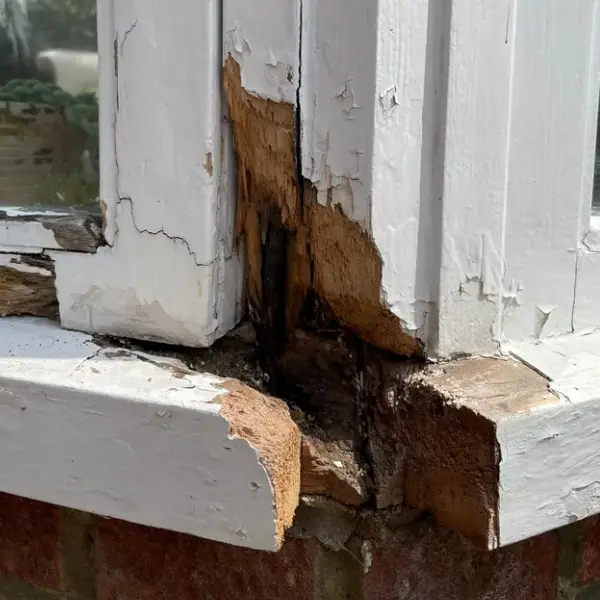
Treatment of wet rot – The causes
As wet rot at its core is caused by issues with moisture, the first step in trying to identify the problem is to find where the moisture is coming from.
Thankfully, there are some very common sources which are typically to blame.
- Leaking Pipes or Roofs: These are both key areas that can lead to the accumulation of moisture. Roofs are particularly bad and can often go unseen for larger periods of time. These leaks can create the perfect conditions for wet rot to occur and thrive.
- Poor Ventilation; Although not a direct source of moisture, poor ventilation can enable moisture and condensation to build leading to wet rot issues. This is especially the case in hidden areas, such as basements, crawl spaces, or attics.
- Damp Walls or Floors: Both can also be a sign of excessive moisture and create the ideal conditions for wet rot to occur. For tips on how to fix damp floors check our full guide.
- Poor Drainage Around the Property: Poor external drainage can create bottlenecks that allow water to pool and fester leading to issues with wet rot further down the line.
- Internal leaks – plumbing inside of the home can often fail. It is often best to check around washing machines and dishwashers for leaks which could cause water to pool and then create issues with wet rot.
Treatment of wet rot: How to identify wet rot
There are often a number of telltale signs that can help you find and then fix a damp rot problem.
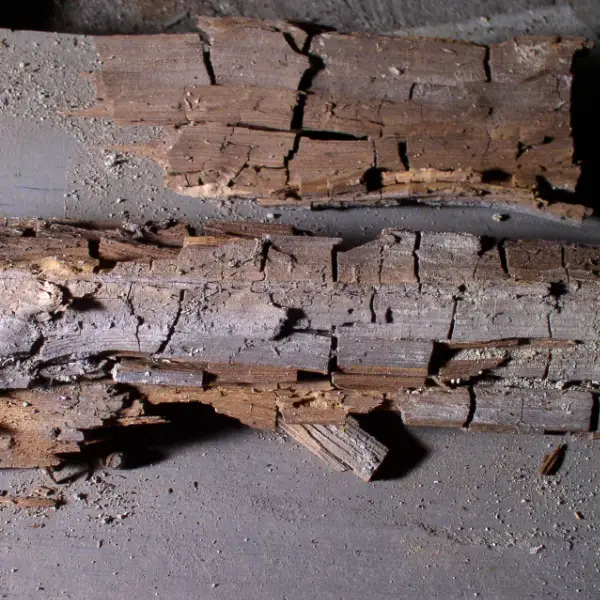
Although some signs are similar to damp issues, there are some symptoms which point directly to an issue with wet rot.
- Bad Odours – A musty, damp odour is a common sign of wet rot. However, this symptom can be easily confused with damp. if wet rot is present it will likely smell even more potent as the fungi produce a strong, unpleasant odour.
- Soft or Spongy Timber – As the fungi feed on the cellulose in the wood, it can cause it to weaken and become spongy to the touch even through several layers of paint.
- Discolouration or Darkening of the Wood: As the fungi grow, they can cause the wood to darken, change colour, or become discoloured due to the high moisture levels inside the wood.
- Warping or cracking of the wood: A classic wet rot sign as the moisture inside of the wood begins to distort its appearance. As the wood weakens, it can become warped or crack, indicating that it is decaying.
This Kinda Old House Top Tip
Due to the serious nature of wet rot, we would strongly recommend consulting professional help as soon as possible. When fighting damp we strongly believe you can make great improvements on your own but wet rot is another level and can often require extensive repairs.
Does wet rot spread?
Wet rot can spread very easily if left untreated. As the fungi feed on the cellulose in the wood, they can continue to grow and spread to other areas, causing more damage. Wet rot can then spread through interconnected timber, such as joists or studs, which can make the problem even more difficult to contain.
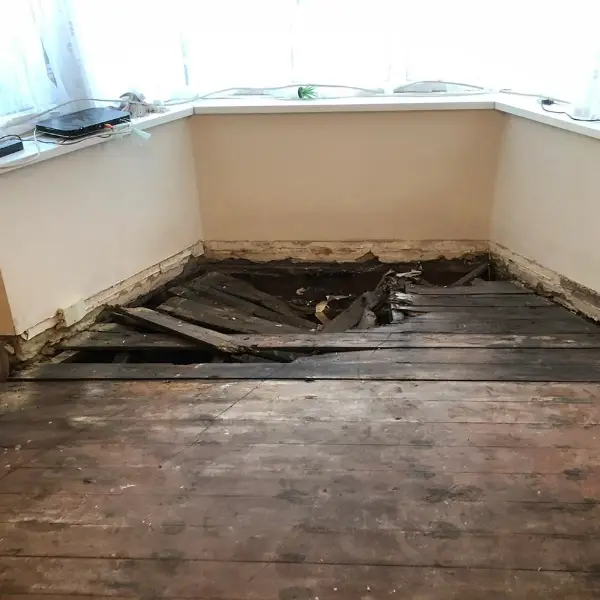
The rate at which wet rot spreads depends on several factors, including the type of fungi involved, the moisture levels in the wood, and the temperature and humidity of the environment. Whether your issue is fast or slow moving it is crucial that the treatment of wet rot is sought quickly.
Treatment of wet rot – the steps
We will now take you through the next steps in fixing a wet rot issue. The complexity of each step will depend on how accessible the issue or source of moisture is within your home.
- Find the source: The first step in treating wet rot is to remove the source of moisture. This can involve fixing leaky pipes or roofs, improving ventilation, or ensuring proper drainage around the property. The worst case is when the leak is under decorative elements such as tiles which makes the leak harder to access and more costly to repair.
- Treating affected areas with fungicides: Once the source of moisture has been addressed, the next step is to treat the affected areas with fungicides. These chemicals can kill the fungi and prevent further growth. It’s important to note that there are many types of different fungi so choosing the correct product and following the manufacturer’s instructions is vitally important.
- Hiring the right people: The treatment of wet rot requires professional expertise and equipment. A professional will have the experience and tools necessary to diagnose the problem, remove the source of moisture, and treat the affected areas effectively.
Preventing wet rot
Wet rot is a serious issue that can cause significant damage to a home or building if left untreated.
The key to preventing wet rot is very similar to treating damp. Your job is to control the moisture levels in your home and ensure proper ventilation.
This can involve a number of different steps including making sure there is no water making its way into your home from the exterior, to managing condensation levels.
By following these tips and being proactive about preventing wet rot, you can protect your property and ensure that it remains a safe and secure place for you and your family for years to come.
Moisture can cause a number of issues inside of an old house, thankfully we have a number of guides on how to treat damp in old homes and all the other issues that often happen in charming old houses.
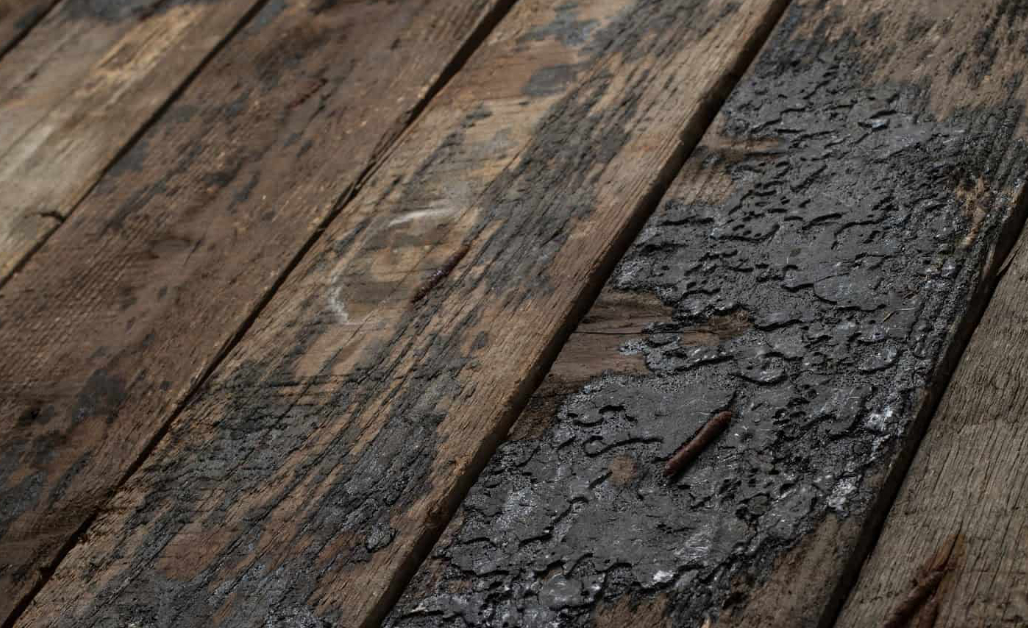

Leave a Reply